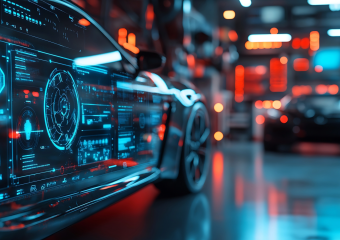The Smart Store Revolution: AIoT Checkout, Inventory, and Experience
AIoT in Retail: Transforming Checkout, Inventory Management, and Customer Experience
Retailers around the world are increasingly turning to advanced technologies to enhance customer satisfaction and streamline operations. The integration of AI (Artificial Intelligence) and IoT (Internet of Things), known as AIoT, is leading this transformation. By bringing together AI’s data processing capabilities with IoT’s network of interconnected devices, retailers can create smarter, more responsive environments. This convergence is particularly evident in three critical areas: checkout processes, inventory management, and the overall shopping experience.
Revolutionizing Checkout with AIoT
Long checkout lines could soon become a thing of the past, thanks to AIoT technologies. Smart checkout solutions use a combination of IoT sensors, RFID tags, and AI algorithms to identify products as customers add them to their carts or baskets. This allows for a seamless checkout experience: shoppers can simply leave the store with their selections while an AI system processes their payment automatically, reducing time spent in queues and enhancing customer satisfaction.
Moreover, these systems gather valuable data on purchasing behaviors, which retailers can analyze to optimize store layouts, product placements, and promotions. This data-driven approach not only improves operational efficiency but also personalizes the shopping experience, making it more engaging for consumers.
Enhancing Inventory Management Through AIoT
Efficient inventory management is crucial for minimizing costs and maximizing sales. AIoT offers a robust solution by automating stock monitoring and management tasks. IoT sensors can track product quantities on shelves in real-time, alerting staff when items need to be restocked. Meanwhile, AI can predict inventory needs based on historical sales data, current buying trends, and other external factors like weather conditions or local events.
This proactive approach not only ensures that shelves are never empty but also helps in optimizing inventory levels to reduce overstocking and understocking issues. By predicting future sales, retailers can adjust their orders to avoid surplus inventory, which often leads to discounted sales and reduced profits.
Improving the Shopping Experience with AIoT
AIoT is transforming shopping into a highly personalized and interactive experience. Smart stores equipped with IoT devices can guide customers to items they are looking for and provide personalized recommendations based on their shopping history and preferences. For instance, digital displays might change dynamically to show promotions tailored to the individual customer currently viewing them, or mobile apps might send personalized coupons while a customer is in the relevant aisle.
AI-powered chatbots and virtual assistants can provide real-time assistance, answering questions about product features, stock levels, and even processing payments. Additionally, AIoT can enhance the physical layout of the store by analyzing foot traffic data collected through sensors, leading to optimizations that make shopping more intuitive and enjoyable.
The Future of Retail with AIoT
The integration of AI and IoT heralds a bright future for the retail industry, promising significant improvements in operational efficiency, customer service, and profitability. Retailers that adopt these technologies stand to gain a competitive edge by offering enhanced shopping experiences while simultaneously reducing costs associated with labor and inventory management.
However, as retailers increasingly rely on AIoT, they must also address associated challenges, such as data security and privacy concerns. Ensuring robust cybersecurity measures and transparent data policies will be crucial for maintaining consumer trust and compliance with regulations.
In conclusion, the AIoT revolution in the retail sector is not just about technology integration but also about reimagining how retail works. From the moment a customer enters a store to the management of inventory to the final checkout, AIoT stands to redefine these processes, making them more connected, efficient, and customer-centric. As this technology continues to evolve and more retailers embrace these innovations, the shopping experience will continue to transform, leading to smarter, more responsive stores tailored to the needs of the modern consumer.





